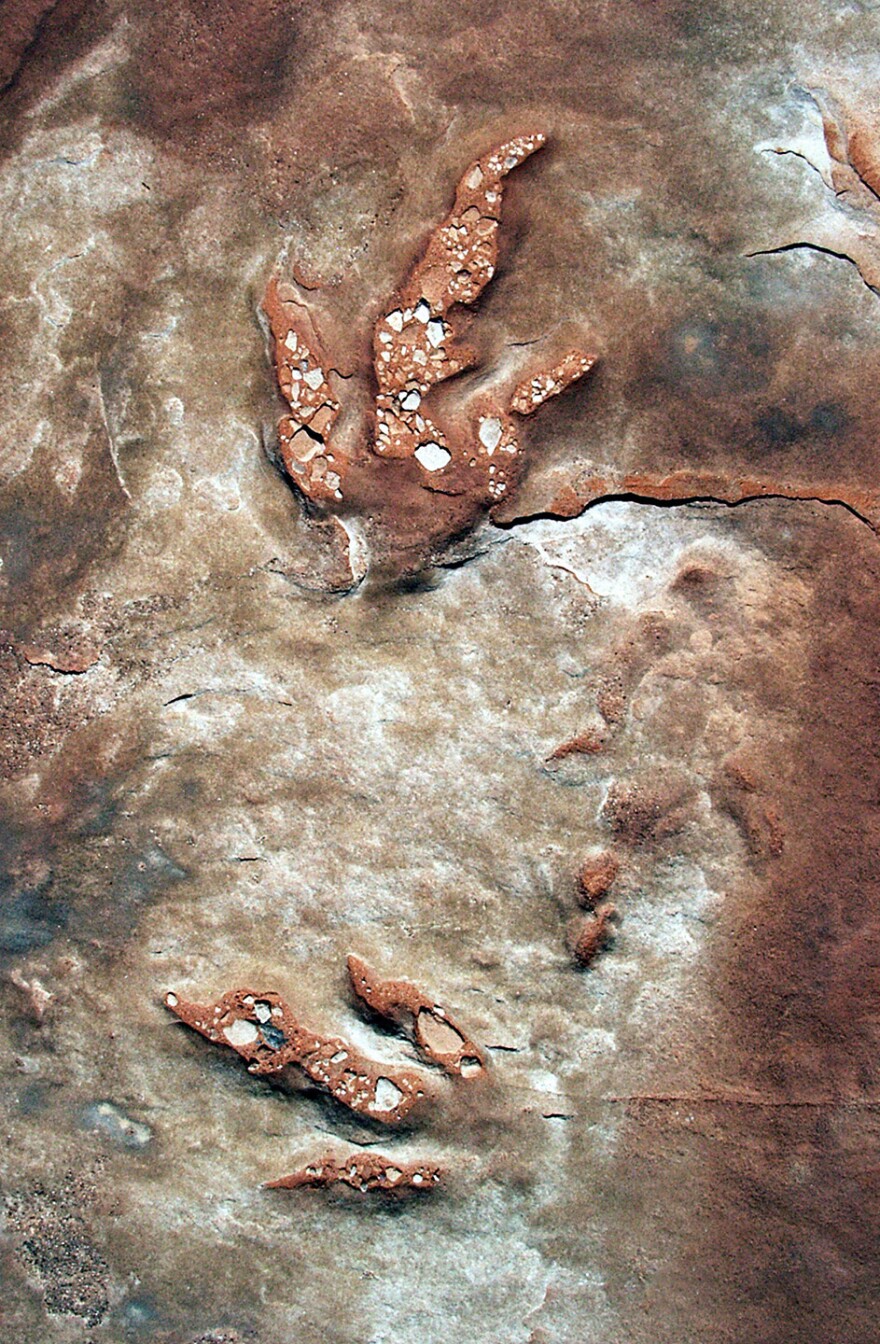No matter how often I head into the Painted Desert, it’s a release of spirit. The wild, hoodoo wilderness stands empty of people. In the deep silence of the desert anything is possible.
Some years ago I entered it with a group of paleontologists from the Museum of Northern Arizona. We were heading toward a dinosaur tracksite first investigated by Barnum Brown in 1929. The greatest bone hunter of his day, Barnum had been guided to the site by Frank Goldtooth, a local Navajo leader. The paleontologist found an exposed layer of rock crowded with more than 300 prints. About 205 million years ago the theropods had crossed a muddy playa in a Jurassic dunefield, leaving so many footprints behind the geologists refer to the site as the Dinosaur Dancehall.
A dry wash took us through terrain as stark as the photos sent back by the Mars rovers. Suddenly we emerged onto a terrace bordered by wind-carved cliffs running unbroken for forty miles.
High on a sand dune stood a lone sheepherder watching us. I asked the paleontologist who was driving to stop so I could let him know what we were doing. That’s how I met Jack Goldtooth, Frank’s son. He lived alone in an isolated homestead known as Camp Nowhere. The two of us talked for a while about how the grass was doing and if the rains had been sufficient. “Do you know of other places with dinosaur tracks?” I then asked.
“Yes,” he said, “lots of those tracks way over there. Go down that wash. You have a four-wheel drive? Go right up that sand dune. Go way over there, cross that other wash, and follow that ridge. There’s wild horses over that way. Take a left, and right on a flat rock are all those tracks.”
Knowing we would never find it, I asked if he would take us and he agreed. We continued to Barnum Brown’s tracksite, then met Jack at his place. After corralling his sheep he asked which way we wanted to go. “The shortest,” the driver answered without realizing his mistake. The sheepherder took that to mean the most direct way, which wasn’t the quickest. We zigged and zagged for a couple of miles, up sandy ridges and down washes, skirting mudholes and crossing one dune after another.
Finally we reached the right spot, and soon we were walking among dinosaur footprints, hundreds of them. Most were about the size of an open hand. The three-toed tracks showed such fine detail we could recognize heel marks, foot pads, and claws long and lethal. Jack, being an expert tracker, knew that the creatures had been milling about water. I asked him what type of animal made them, curious to see what he came up with.
“I’m not sure. The hip was about here,” he said, holding his hand a little below his waist, “and stood this high.” He held an arm above his head, indicating a height of seven feet. Paleontologist Dave Gillette watched him closely, surprised by his accuracy. “You’re right,” he said.
He jotted down a few lines in his Rite in the Rain notebook and told Jack he would name the tracksite after him. Then Dave asked, “Why hasn’t anyone found this site before?” And I gave him a straight-forward answer.
“Nobody asked Jack.”
Returning from the desert we left our own tracks behind. Within a few months they would be gone, covered by drift sand and washed out by the rains. Yet the dinosaur tracks left in mud have somehow remained. The chance of their having lasted for millions of years is so extraordinarily slim, they stand as a reminder of the extraordinary world surrounding us.


